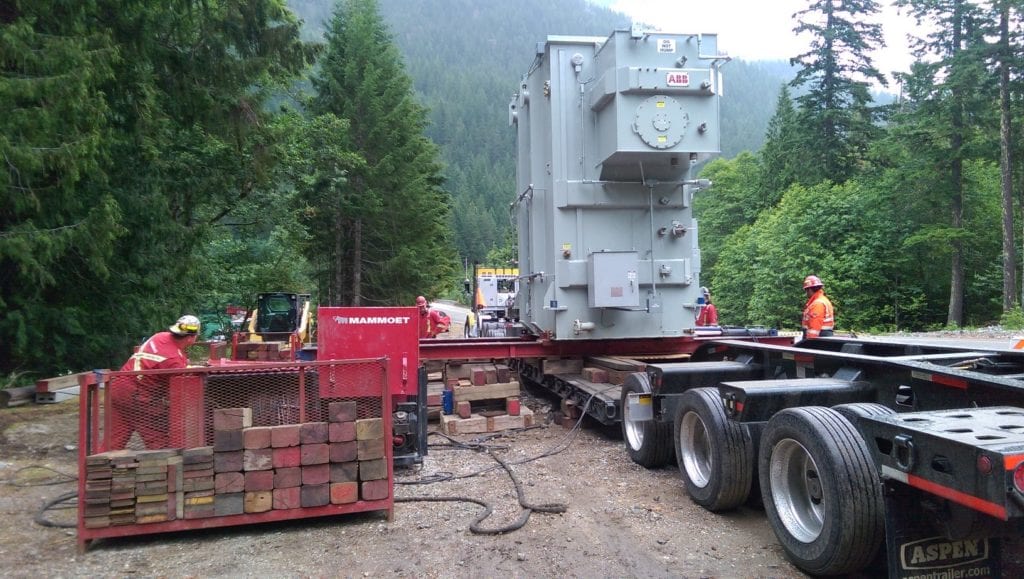 For the first time since Ross Dam and its powerhouse went into service in the 1950s, Seattle City Light is replacing the large transformers that convert electricity generated at the powerhouse to higher voltage for transmission to Seattle.
For the first time since Ross Dam and its powerhouse went into service in the 1950s, Seattle City Light is replacing the large transformers that convert electricity generated at the powerhouse to higher voltage for transmission to Seattle. 
One of the new Ross Powerhouse transformers is loaded onto a barge to be carried across Diablo Lake.
For the first time since Ross Dam and its powerhouse went into service in the 1950s, Seattle City Light is replacing the large transformers that convert electricity generated at the powerhouse to higher voltage for transmission to Seattle.
The transformers weigh about 80 tons, and moving them from the manufacturer, ABB, in St. Louis to the Skagit Hydroelectric Project has been a massive undertaking of its own. Each transformer was loaded onto a rail car and delivered by train from Missouri to Bellingham. There, each transformer was loaded onto long semi tractor-trailers that could handle the weight and carefully driven up twisting Highway 20 through two tunnels into the North Cascades.

Replacement transformers were brought by semi tractor-trailer up Highway 20.
While smaller loads can be driven across Diablo Dam to reach Ross, these trucks were too long. That meant transferring the transformers using a “jack-and-slide” technique to a special trailer with many axles and wheels, called a crawler. The crawler then took them over a temporary gravel road to the edge of Diablo Lake near the Thunder Knob Trailhead and Colonial Creek Campground. There, they were loaded onto a barge and towed across the lake to the Ross Powerhouse where they will be installed over the next four months.

Workers slide a transformer off the tractor-trailer and onto the crawler.
Seattle City Light will deliver seven new transformers and remove six existing transformers over the next two years. Half of the work will be performed this summer. The other half will be replaced in summer 2017. The existing transformers have been in continuous use since Ross Powerhouse began operations in the 1950’s. They have reached the end of their useful life.